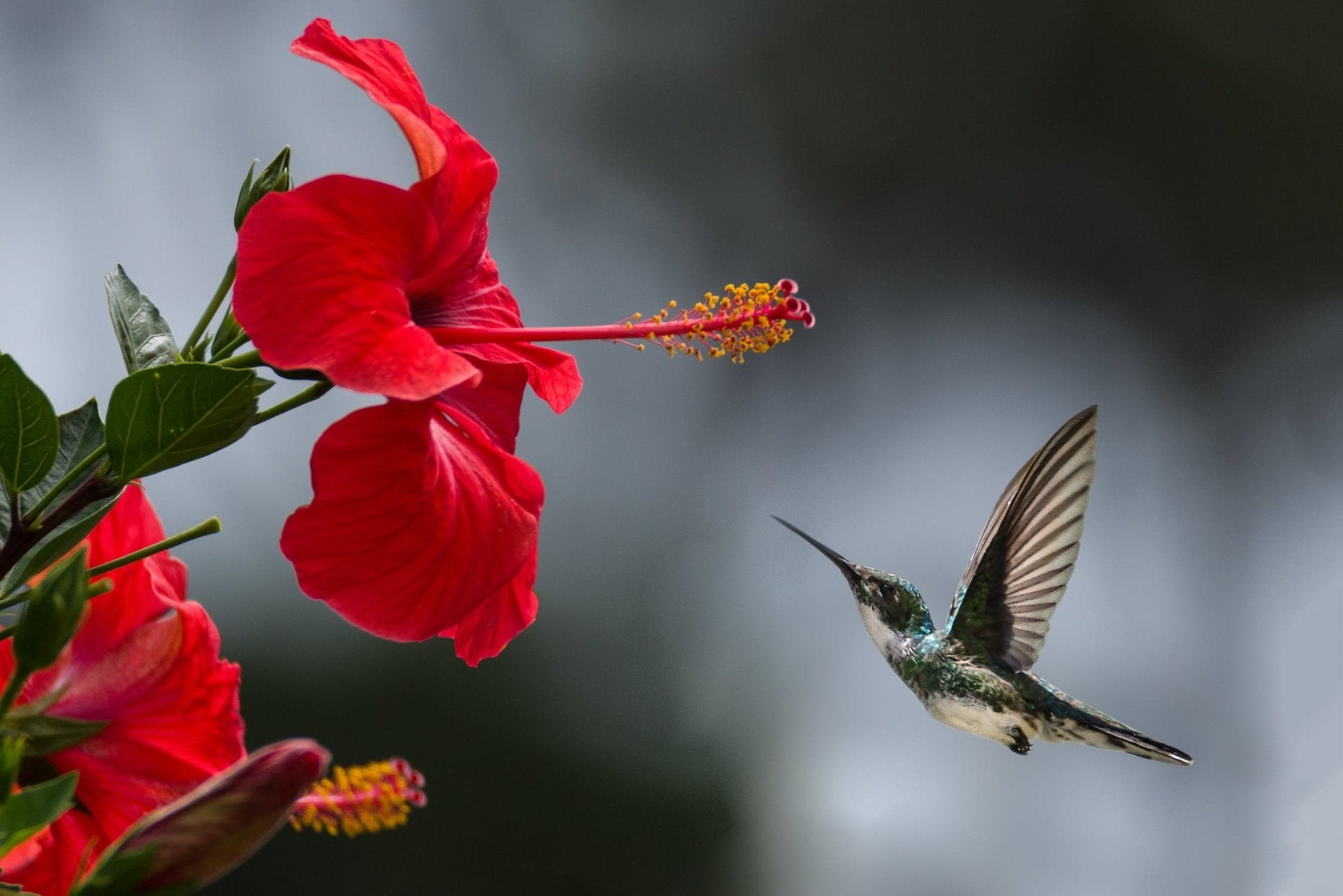If you want to photograph hummingbirds, you will need to have patience. Hummingbirds are such gorgeous birds (I even have a tattoo of one!). Birds can't fly backward, but guess what?! Hummingbirds sure can! Not only are they gorgeous, but they are also fast and can flap their tiny little wings up to 200 times per second! Considering their speed, they are a tricky little creature to photograph.
1. Understanding Hummingbirds
Researching the subject for your wildlife for photography is very important. You will want to fully understand your subject's habits since you can't communicate with them. You want to make sure you are in the right place at the right time. Here's a research checklist to help with all types of wildlife photography:
- Where is their habitat located?
- Are they more active during the day or night?
- What season in the year are they more active?
- What noises do they make? Can you spot this noise from a distance?
- What does their diet consist of? For Hummingbirds specifically, where do they eat their nectar?
Since hummingbirds are so tiny, it can be hard to spot them in the wild if you don't have them coming to your back yard.Try to recognize the sounds they make so your ears can help your eyes locate them. Hummingbirds have a unique chirping song and, you can usually hear the buzz from their fast flapping wings.
2. Patience
Always be patient. You're now playing the waiting game. Once you've understood the hummingbird's habits, the only thing you can do is wait. Find the perfect spot near a flower they can sip nectar from and set up your tripod. You can try our travel tripod that is easy to carry:
Promaster XC-M 522K Professional Tripod
Always remember to move slowly and don't make any sudden moves. Most wildlife is more scared of you than you are of them (although hummingbirds aren't scary). You don't want to scare them off and ruin a good shot. Usually, hummingbirds will come back to a spot even after a human has scared them but, you should still try to move gracefully.
3. Continuous Focusing
Your camera should have an autofocus feature. Make sure you keep this enabled while shooting hummingbirds. Since they move quickly, you won't have time to keep readjusting your focus. You should use the center AF point only, so your focus on the bird doesn't drift to something in the background.
4. Fast Shutter Speeds
Again, circling back to the fact that these little creatures are speedy, you should use a fast shutter speed. Make sure you are using a high ISO (between 400 and 800). While keeping the bird in focus, use a wider aperture. You should also invest in a powerful external flash for good action shots and to freeze their wings:
5. Take plenty of photographs
It's always best to take a large number of photographs, so you have a better chance of picking out the best photo. The same applies to action shots, and in this case, hummingbirds. And when I say a bunch of photos I mean, hundreds of photos (seriously, a bunch!). When your subject is as speedy as a hummingbird, the likelihood of getting blurry photos is high. You can take 500 photographs and only get five good shots.
6. JPEG vs. RAW
Another consideration is whether to shoot in JPEG or RAW. Shooting with raw can limit how many photos you can take in a burst. Shooting in JPEG format will allow you to take more pictures in a burst.
Think of incorporating a ballhead with your tripod.
This product will allow more support for your camera while being able to follow the hummingbird around. You can keep the ballhead on your tripod slightly loose for movability. This product will help a lot since you aren't sure where the hummingbird will go. You will be able to move around with ease. If your lens has an image stabilization feature, you should turn this on. Usually, it is recommended to keep this off when using a tripod, but since you have your ballhead loose and not locked, image stabilization will keep your camera stable.
With all of that said, remember that shooting hummingbirds isn't an easy task. In general, wildlife photography is unpredictable. Although unpredictable, it can be one of the more rewarding and fun photography experiences. Not knowing what your subject will do or what your photograph will capture gives off a thrill you can't get anywhere else.
Keeping in mind the habits and behaviors of your wildlife subjects will make this experience a lot easier.












